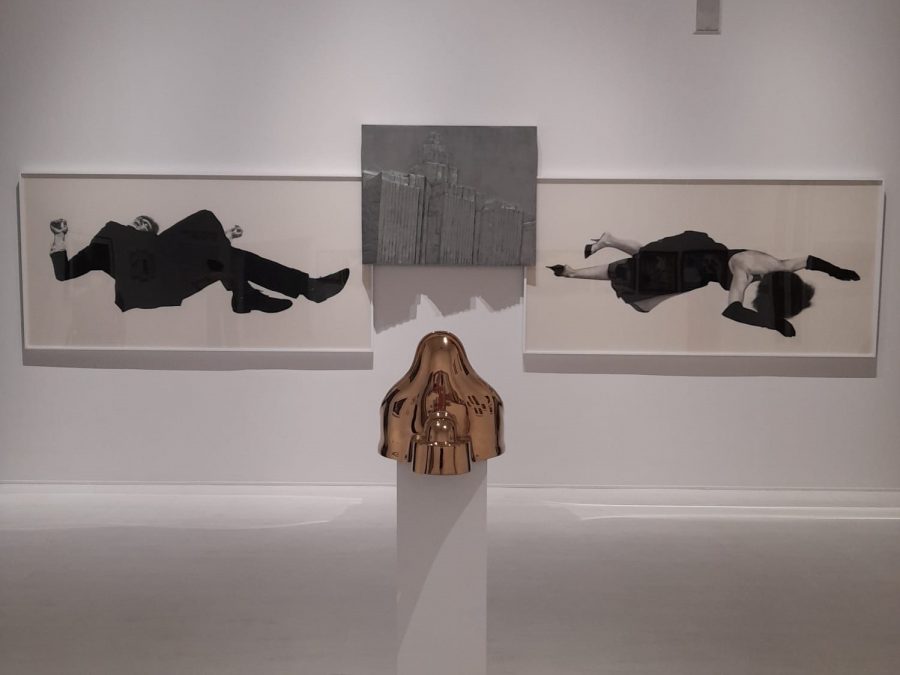The American Art Exhibition at the Palazzo Strozzi Florence ends on Sunday 29th August. Don’t miss a contemporary art collection spanning the period from 1961 to 2001.
The American Art Exhibition at the Palazzo Strozzi, Florence ends this weekend. Spanning the period between 1961, the start of the Vietnam war, to 2001 and the catastrophic 9/11 destruction of the twin towers, the art exhibition corresponds to both an American and Global story.
Over 80 works of art
The Exhibition is the result of 4 years of collaboration with the Walker Institute in Minneapolis Minnesota US, and the Palazzo Strozzi in Florence.
There are more than 80 works of art from over 50 artists, of which 27 are still living, in the form of sculptures, paintings and cinematic offerings from the likes of Mathew Barney and his cult classic the Cremaster Cycle; and Kara Walker and her film Testimony.
Anyone who has lived through this period can’t help but recognise the social, political and cultural issues and changes that are raised by the artwork.
Review by Florence Tour Guide – Sarah Cater
It must be said, I wasn’t a lover of contemporary art; but I have been converted thanks to this exhibition. I loved it, in-part, because the art connected with me. I remember the social issues, political and cultural changes it highlights, in particular from the 1980’s onwards with Ronald Reagan and Margaret Thatcher (I’m English, by the way) the global consumerism, the emergence of a new virus, AIDS, and how we reacted to each other’s sexual identity. These are amongst many of the subjects the art in this collection raises.
I found it thought provoking and clever, art that questions how we see the world. For example, the pile of newspapers by Robert Gober. At first glance, depicted on the front page is a bride with the words ‘having it all’ written beside it, but on closer inspection we can see that it is Gober himself, an openly gay artist. He was one of several artists who explored sexual and cultural identity in the 1980’s.
Andy Warhol

Andy Warhol is arguably America’s best-known artist and a few of his works are shown here. He was responsible for the rise of Pop Art along with other artists, most notably Roy Lichtenstein. It was a joy to be able to see such iconic works such as the 16 Jackies by Warhol, a commentary that people also become objects of consumerism linked to media frenzy.
Jackie Kennedy, as she was, is depicted 16 times, before and after the assassination of her husband John F Kennedy in Dallas 1963. The continuation of her image was also a metaphor, for the media repetition and how it programs us to think and feel a certain way. It has been suggested that the famous trilogy by Andy Warhol of Marilyn Monroe, Elizabeth Taylor and Jackie Kennedy was religious art for a secular culture, with 2 Magdalens and a Holy Virgin. Jackie Kennedy was a secular version of a saint venerated by the masses.
There are also 2 self-portraits of Andy Warhol. In one he is seen with hands clasped around his throat and the other with a skull on his head. These reference Warhol’s own mortality and his obsession with death because in 1968 he was shot by Valerie Solanas and nearly died.
Roy Lichtenstein
Is he the worst artist in the US? This was a question posed by Life Magazine of Roy Lichtenstein. His work was originally quite shocking and exhibited is his ‘Look Mickey’ from 1973. He wasn’t a fan of cartoon comics, so transformed them into formal paintings coloured with his signature hand-painted Benday dots.
The collection at the Palazzo Strozzi is not just about ‘Pop Art’. There are different styles of contemporary art, from conceptual to process and minimal art; and there is a vast array of well-known and lesser-known art mediums and artists on show.
Conceptual art
John Baldessari has been called the master of conceptual art and is famous for his phrase ‘no more boring art’. Hence the reason there is a room with this phrase written across it, with a video of him writing this phrase until the tape runs out. He is best remembered as the man who put dots over people’s faces, and who decided to cremate all that he had made from 1953-1966 and put the ashes in a bronze urn in the shape of a book. Genius.
There is Bruce Nauman and a video installation taking up a whole room entitled Art Make up. In it he is shown “making himself up” with white, pink, green and black paint. He stated, “If I am an artist and I am in a studio, that means that whatever I do in this studio is art.” Art can be an activity, a process, such as walking on a line on the studio floor or bouncing off a wall repeatedly.
There is an electric wire with light bulbs, called Last Night, by Felix Gonzalez-Torres. He was an Cuban-American artist who died from Aids a few years after his fiancée Ross succumbed to the virus. It represents the last meeting between him and his partner; a reminder that our life is short and we could leave this world at any moment. This message in the 90’s, with the impact of Aids, was felt by many and can be felt today with the loss of many to the Covid virus.
Cinematic art and eroticism

Mathew Barney has influenced art in the last 30 years. Being shown is his cinematic art, The Cremaster cycle, named after the muscle that controls the height of the testicles. He produced 5 films out of order between 1994 and 2002. Those that have watched the whole film in its entirety have stated that it is dense and psychedelic.
I saw a part of it which reminded me of those late-night films that you continue to watch even though you know you should turn it off and go to bed. I saw the part of the film which is the recreation of the gas station killings by Gary Gilmore who was the first American executed by the state when capital punishment was reinstated in 1976. In particular, the part where Barney himself plays Gilmore, sitting inside his car, was slow. An interesting side note I thought is that the props created for the films were later sold as sculptors to collectors.
Robert Mapplethorpe, an American photographer, is best known for black and white portraits and self-portraits. One of the latter is of him as a 1950’s teddy/bad boy and another of 2 men dancing. He communicated gender is socially constructive and questioned the church and religion through his art. He used explicit and erotic images at times, drawing inspiration from Greek and classical sculptures emphasising structure and geometry; beauty with no imperfections.
Female artists

There are also 14 women artists included, such as Ann Truitt, Jenny Holzer Cindy Sherman and Agnes Martin. The latter stated, “from music people expect pure emotion but from art they demand explanation”.
The exhibition in fact, starts with Louise Nevelson a key figure in women’s art. It ends with Kara Walker, one of the most important female artists of African descent. She tells a story of colonialism and slavery. Her film relates the emancipation of a family of slaves and its subsequent failure.
There are many more artists in this exhibition that are worthy of more than just a mention. I hope the last week of American Art at the Palazzo Strozzi in Florence is brimming with people; it deserves to be.
‘Making art is a political gesture’, commented Robert Longo, a New York artist. This exhibition is brimming with political and subjective views of the world we lived and live in. In fact, many of the issues are as important today as they once were. And, if through art we stop and think for a little bit, I am all for contemporary art.





